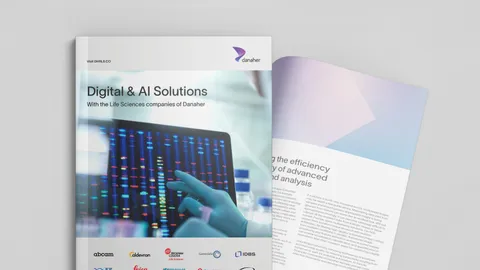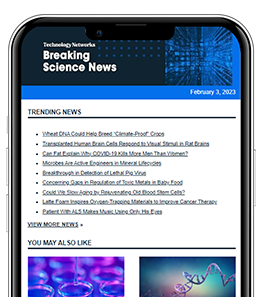Why Academic Publishing Must Change
Experts share how academic publishing must evolve to meet modern scientific and societal challenges.

Complete the form below to unlock access to ALL audio articles.
As scientific output accelerates and global challenges demand faster, more transparent research, the systems that underpin how science is shared and reviewed must also evolve.
What might this future look like? Technology Networks posed a single question to a diverse group of academics and industry leaders: How do you think the academic publishing landscape needs to evolve to better support scientific progress and accessibility, and what changes are you already seeing? Here’s what they had to say.
Deborah Cragun, PhD, associate professor at the University of South Florida
I think we need to do a better job at reviewing papers and preventing garbage manuscripts from being published. Doing a good job as a peer reviewer takes time – but I do think that AI-assisted peer review would help speed things up – though there are confidentiality issues there and we still need knowledgeable peer reviewers to oversee it.
Stephen Hilton, PhD, associate professor at the UCL School of Pharmacy
To truly support scientific progress in a global, digital age, academic publishing must become more open, interactive and inclusive.
Firstly, accessibility must be prioritized. Paywalled articles limit knowledge sharing, particularly in low-resource settings. Open access publishing – while growing – must become the standard, not the exception. We’re already seeing a shift, with more funders and institutions requiring open dissemination of publicly funded research.
Secondly, publishing must evolve beyond static PDFs. As research becomes more complex and data-rich, we need interactive formats that incorporate live datasets, embedded VR or 3D models and integrated AI tools that allow readers to explore and even simulate experiments. For example, our work in VR training and digital twin laboratories would benefit greatly from publications that include immersive walkthroughs or real-time telemetry links.
Another critical change is recognition of new types of contributions. Software development, dataset curation and AI training – central to modern science – are still undervalued in traditional publishing metrics. Journals must expand their definition of scholarly output and improve credit for collaborative and interdisciplinary work.
Finally, there's an opportunity to use AI to democratize access further, through multilingual summarization, voice-based access and adaptive formatting that supports neurodiverse and visually impaired readers.
We’re already seeing journals like Digital Discovery begin to explore these directions, but broader systemic change is still needed to align publishing with the realities of how modern science is being done.
Lindsay Davies, PhD, CSO at NextCell Pharma AB
It is my belief that better traceability is needed for academic publishing, especially related to clinical trials. As new technologies develop, it is important that key information related to methodologies, statistical and study design and reporting should be standardized so that the reader can be more informed and less likely to misinterpret data. This would also improve the quality and concluding assessments of meta-analyses performed using published studies.
Alexander Seyf, CEO at Autolomous
It is critical to also start publishing negative/null results.
A massive waste of resources occurs when negative or inconclusive results are not published. The publishing culture needs to evolve to value and publish these outcomes, as they provide invaluable lessons that prevent others from repeating futile experiments. Some journals are introducing dedicated sections for this, but it's far from the norm.
In addition, focusing on establishing dynamic and living publications. The traditional static PDF article limits the sharing of evolving data. The future of publishing should incorporate dynamic elements, allowing updates, additions of new data and real-time interaction with underlying datasets and computational models.
Professor Samra Turajlic, PhD, group leader and consultant medical oncologist at The Francis Crick Institute and The Royal Marsden Hospital
The publishing landscape needs to place much greater value on negative results, especially in translational and clinical research where knowing what doesn’t work is just as important as what does. Too often, negative trial outcomes or inconclusive biomarker findings go unpublished, which wastes resources and skews the scientific record. We’re seeing positive steps – more preprints, open data mandates and some journals encouraging methodological transparency, but incentives still favor positive, novel results. To support real progress, we need publishing models that normalize the reporting of negative data and better reflect the complexity and collaborative nature of modern biomedical science.
Lori Ball, CEO, Astoriom
Academic publishing must become faster, fairer and more transparent. Open-access models are a positive step, but we still see barriers around paywalls and publishing costs that limit access and equity. We need platforms that prioritize data sharing, peer collaboration and real-world application – not just impact factor. Encouragingly, we're seeing the rise of preprint servers, digital repositories and funding-linked transparency requirements that democratize access to findings. This shift will ultimately accelerate translational science and support better decision-making in both industry and academia.
Madusha Peiris PhD, founder and CEO, Elcella
Academic publishing would benefit greatly from providing feedback – via peer review – by instilling transparency, accountability and financial support to academics for their contribution to the scientific process. Scientists all seek to add to knowledge, but there is a significant pressure to publish as a means to progressing careers, and metrics relating to prestige of academic journals are regularly used to rank/value the importance of scientific work, and the scientist by default. These outcomes can dampen creativity and innovation by focusing only on outcomes that are positive or scientifically “on-trend”, meaning ground-breaking findings can be undervalued. Providing scientists the freedom to explore and thus make knowledge leaps, alongside a publication landscape that values peer-review transparency, support and encouragement, will ultimately lead to faster progress.
Changes such as dependency on metrics to value/validate science are happening and further work on compensating scientists for their peer-review time (which is currently voluntary) will create a scientific environment that will ultimately advance the human condition.
Mara Aspinall, partner at Illumina Ventures
Academic publishing is absolutely essential to advancing the science of diagnostics. The recent development of preprint publications is an excellent evolution, or perhaps a revolution born during COVID, and should continue because it hastens and broadens access to critical research. While preprint is a positive development, it should not be viewed as a replacement for peer review.
I’d like to see a change in the way publications are evaluated in top journals. Many top journals have publication “checklists” that require the inclusion of data from double-blind clinical trials. These trials are essential to most drug evaluations, but this model doesn’t fit to the diagnostics space. There needs to be unique and relevant criteria for publication tailored for each sector of life sciences.
Tomek Czernuszewicz, PhD, director of ultrasound imaging, Revvity
One big change that will likely be a permanent mainstay is the adoption of preprint publishing.
The use of preprints can improve accessibility, offer avenues for widespread feedback and accelerate knowledge dissemination, but I worry that in our age of rapid news cycles, the lack of true peer review can lead to misinformation spread.
Some additional guardrails may need to be put in place at an institutional level. Some ideas that I like include:
- Add automated screening tools that detect statistical errors, report methodological inconsistencies and set minimum reporting standards (and open data sharing).
- Community-based signaling with badging and voting.
- Transparent versioning showing changes, and removal of preprint when the final version is published.
At the end of the day, none of these ideas will stop someone from sending a tweet that ends up being liked by thousands of people that misrepresents conclusions to serve their own agenda, but perhaps it will help curb some of the more egregious problems with publishing non-peer reviewed work.














